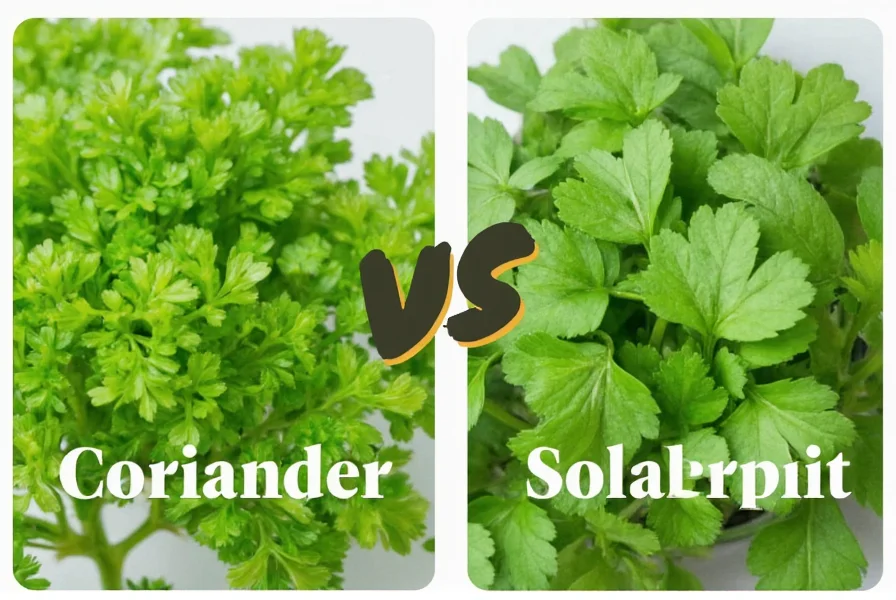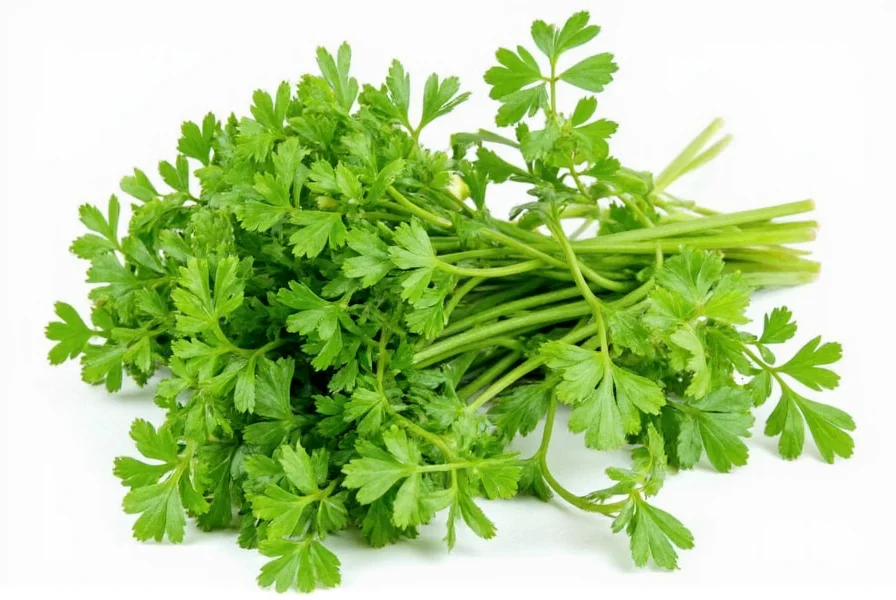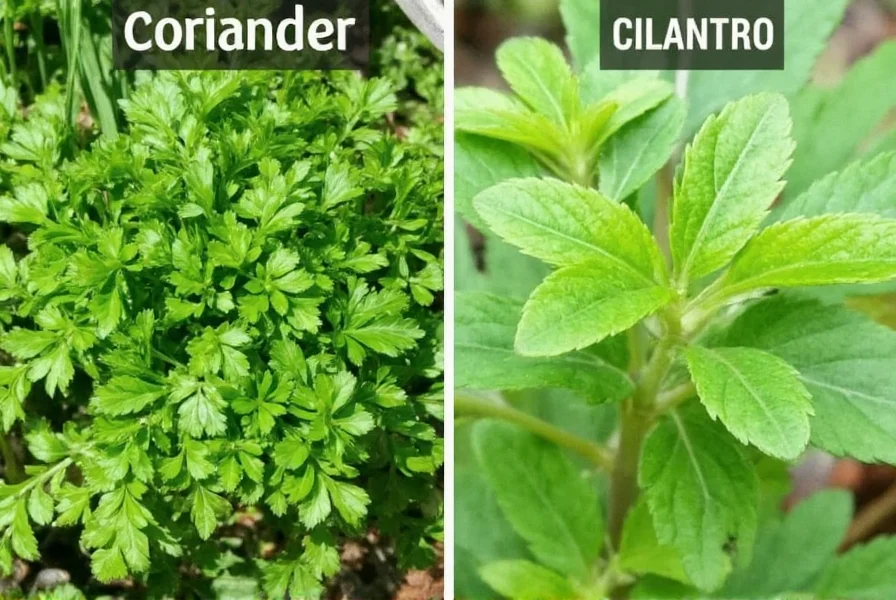Coriander and cilantro come from the same plant, Coriandrum sativum. The difference lies in regional terminology: "cilantro" refers to the fresh leaves and stems in the Americas, while "coriander" typically describes both the fresh herb in Commonwealth countries and the dried seeds globally. This dual naming causes frequent confusion in recipes and grocery shopping.
Understanding the coriander/cilantro distinction is essential for navigating international recipes and grocery aisles. This versatile herb belongs to the Apiaceae family, sharing botanical relations with parsley, carrots, and celery. The plant produces both the fresh green leaves known as cilantro in North America and the round, tan seeds called coriander seeds worldwide.
Botanical Identity and Naming Conventions
Scientifically classified as Coriandrum sativum, this annual herb has been cultivated for over 3,000 years. The naming confusion stems from linguistic evolution:
| Term | Refers To | Primary Usage Regions |
|---|---|---|
| Cilantro | Fresh leaves and stems | United States, Canada, Latin America |
| Coriander (leaves) | Fresh leaves and stems | United Kingdom, Australia, India, South Africa |
| Coriander (seeds) | Dried spherical seeds | Global culinary usage |
The word "cilantro" derives from Spanish, while "coriander" comes from the Greek "koris" (bug), referencing the plant's distinctive scent. This explains why many English-speaking countries outside North America use "coriander" for both the fresh herb and seeds, requiring context to determine which part is referenced.

Culinary Applications Across Global Cuisines
Chefs worldwide utilize different parts of the coriander plant for distinct flavor profiles. The fresh leaves (cilantro/coriander leaves) offer a bright, citrusy flavor that enhances:
- Mexican salsas and guacamole
- Thai curry pastes and soups
- Indian chutneys and raitas
- Middle Eastern tabbouleh and salads
Conversely, coriander seeds provide a warm, slightly sweet, lemony flavor when ground, essential in:
- Indian curry powders and garam masala
- Middle Eastern baharat spice blends
- European pickling recipes
- German bread seasonings
Professional chefs note that fresh cilantro loses its distinctive flavor when cooked extensively, making it primarily a finishing herb added just before serving. The seeds, however, benefit from toasting which enhances their aromatic compounds.
Understanding the Genetic Taste Variation
Approximately 21% of the population carries a genetic variation that makes cilantro taste like soap. This OR6A2 gene variant affects olfactory receptors, causing certain aldehydes in cilantro to register as soapy rather than citrusy. This explains why some people strongly dislike fresh coriander leaves while others enjoy them.
For those affected by this genetic predisposition, suitable substitutes include:
- Parsley (for visual presentation)
- Basils like Vietnamese or culantro (Eryngium foetidum)
- Finely chopped celery leaves
- Epazote for Latin American dishes
Growing Coriander Successfully at Home
Home gardeners can grow coriander successfully with these guidelines:
- Plant in well-draining soil with full sun to partial shade
- Sow seeds directly (transplanting often fails due to taproot)
- Harvest leaves when plants reach 6 inches tall
- Allow some plants to flower and produce seeds for coriander spice
- Succession plant every 2-3 weeks for continuous harvest
The plant bolts (goes to seed) quickly in warm weather, so many gardeners plant in early spring and again in fall for optimal leaf production. For maximum seed yield, allow plants to mature fully before harvesting the seed heads.

Nutritional Profile and Health Benefits
Both fresh coriander leaves and seeds offer nutritional benefits. Per 100g serving, fresh cilantro provides:
- 270% of daily vitamin K requirement
- 111% of vitamin A
- 45% of vitamin C
- Significant calcium, iron, and magnesium
Coriander seeds contain higher concentrations of dietary fiber and certain minerals. Research suggests both forms may support digestion, reduce inflammation, and provide antioxidant benefits, though more studies are needed to confirm specific health claims.
Storage Techniques for Maximum Freshness
Preserving fresh coriander/cilantro requires specific techniques:
- Store stems in water like cut flowers (refrigerate with plastic bag cover)
- Freeze leaves in ice cube trays with water or oil
- Dry leaves slowly at low temperatures for tea or seasoning
- Store seeds in airtight containers away from light and moisture
Properly stored fresh cilantro maintains quality for 7-10 days, while dried seeds retain flavor for 6-12 months. Freezing preserves the fresh herb's flavor better than drying, which significantly alters the taste profile.
Common Questions About Coriander and Cilantro
Can I substitute dried cilantro for fresh in recipes?
Dried cilantro loses most of its distinctive flavor and isn't recommended as a substitute for fresh. Use 1 tablespoon fresh cilantro for every teaspoon of dried herb called for in recipes. For better results, substitute with parsley or other fresh herbs when fresh cilantro isn't available.
Why do some people think cilantro tastes like soap?
Approximately 21% of people have a genetic variation (OR6A2 gene) that makes them perceive certain aldehydes in cilantro as soapy rather than citrusy. This genetic predisposition affects how olfactory receptors process the herb's chemical compounds, creating a dramatically different taste experience.
Are coriander seeds and cilantro seeds the same thing?
Yes, coriander seeds and cilantro seeds refer to the same botanical product - the dried spherical seeds of the Coriandrum sativum plant. The term "coriander seeds" is used globally regardless of regional naming preferences for the fresh herb.
How can I prevent my cilantro from bolting too quickly?
To prevent premature bolting, plant cilantro in partial shade during warmer months, maintain consistent moisture in the soil, and harvest leaves regularly to encourage bushier growth. Succession planting every 2-3 weeks ensures a continuous supply of leafy growth before plants flower.
What's the difference between Mexican coriander and regular cilantro?
Mexican coriander typically refers to culantro (Eryngium foetidum), a different plant with longer,锯齿状 leaves and stronger flavor. While used similarly in Latin American cuisine, it's botanically unrelated to true cilantro (Coriandrum sativum) and has a more robust, persistent flavor that withstands cooking better.











 浙公网安备
33010002000092号
浙公网安备
33010002000092号 浙B2-20120091-4
浙B2-20120091-4